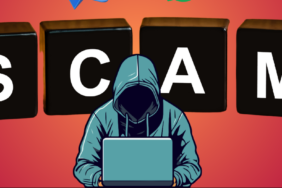A little under a year ago, I announced on Twitter the idea of the Bitcoin Script Project. To say it was well received would be an understatement. Bitcoiners were craving something they could hang onto in the middle of the bear. Glimmers of hope were on the horizon and I intended to magnify those and hopefully rally the industry around a new technological narrative. Unfortunately, life had other plans and, to make a long story short, I quickly realized I bit off more than I could chew at the time.
The Bitcoin Script Project never saw the light of the day. At best, it was a short-lived social awareness campaign. It seeded some ideas and moved the conversation forward. At the very least, it’s probably why I have the privilege of working on this column today. I bring this up because my experience is no different than the one of hundreds of individual who have tried to leave their mark on Bitcoin. It’s a humbling and thankless affair. Bruised egos are commonplace. Many have left far more blood, sweat, and tears than I have on this front.
Every once in a while though, stars align and our collective actions start transcending each individual’s own interests. You see, Bitcoin moves at its own rhythm. Try to push the pace and the whole dance is thrown off. This synchronization act requires serious patience.
Last week, just as the walls appeared to be closing in, the dance company finally got its act together. And it was beautiful. After a long hiatus, optimism is back and has finally shaken off the fear, uncertainty, and doubt. The opportunity ahead has galvanized the developer community to undertake perhaps its most ambitious work yet.
Make Script Great Again
As I entered the halls of the Palmer Events Center in Austin on Wednesday morning, it was hard to ignore the flashbacks from days long gone.
Back in 2015, an eerily similar event took place in Montreal, Canada, and set the tone for the next decade. Scaling Bitcoin came at a critical junction in the project’s history – just as the community struggled to define its vision for the future. The event was a who’s who of a then young, nascent industry. The entirety of Bitcoin’s figurative brain under one roof. Scary, in hindsight.
I digress, but Bitcoin++ last week had similar vibes. You could tell right away there was a special energy in the building and the crowd was no less stellar. A stark contrast from the average conference roadshow and the online antics we’ve become accustomed to.
No billboards, no 280-character tirades, and most importantly, no sales pitch.
At the onset of the conference, it was hard to ignore the momentum behind the OP_CAT proposal. Its staunchest proponents were likely preparing for the event to be its consecration. Rough consensus appeared within reach and even those who had originally dismissed it were coming around to the idea.
As fate would have it, at least one person had other plans, and in the first few minutes of his presentation, the implications dawned on everyone present.
“The Great Script Restoration Project” is Blockstream developer Rusty Russell’s attempt to flip the proverbial script on everyone. It’s a journey to contemplate the “why” behind the kerfuffle of script and covenant proposals thrown around these days. What are we trying to achieve?
How about fixing Bitcoin script and returning it to its former glory?
For context, a significant portion of Bitcoin’s script capabilities was precipitately removed in 2010 when it was uncovered that certain functions were liable to resource exhaustion attacks (DDoS). Rather than address the underlying issue, Satoshi took an axe to everything he thought might be affected and the mangled, hacky byproduct is what we’re left with today. A lot of the conversation up to now has revolved around patching scripts with bandaids here and there to restore some functionality. This has inevitably dragged us into the deadends of horse trading and bikeshedding.
The restoration project flips this approach on its head and proposes we take the proper engineering steps to get there. If we agree on the destination, we should embrace this opportunity to change Bitcoin for the better. Political, social stigmas, and ossifiers be damned. This latter point cannot be emphasized enough. Intentional or not, Rusty’s presentation feels like a call for developers to liberate themselves from dogma and embrace science anew.
It turns out the best way to rope developers in is to nerd-snipe them with data, benchmarks, and measurements. I’ll leave it to more technical folks to lay out the details of his framework but it’s worth pointing out why it has proven so effective. By offering a model to account for the cost of each associated change, Rusty allows us to unite them all under the same umbrella. This is a significant departure from the existing framing which pitted every proposal against one another. Instead, we work together to fix what was previously abandoned and thought to be broken using thoughtful engineering.
Trust the process
To be clear, “The Great Script Restoration Project” hardly qualifies as a proposal yet. It is but a loose collection of ideas and some very early suggestions about how we might approach them. The reason it has gained so much traction in such a short time is that it is an opportunity to do things differently. To finish Satoshi’s work.
For the first time in a long, long time, some outlines of rough consensus are shaping up. Maybe not around a proposal, but at least around a process. That’s progress.
“Let’s be engineers. Let’s be objective and let’s have rational arguments about this stuff. Yes, we will have to convince the rest of the world but that’s much much easier if we’re all pulling in the same direction”. – Christian Decker








Comments are closed.